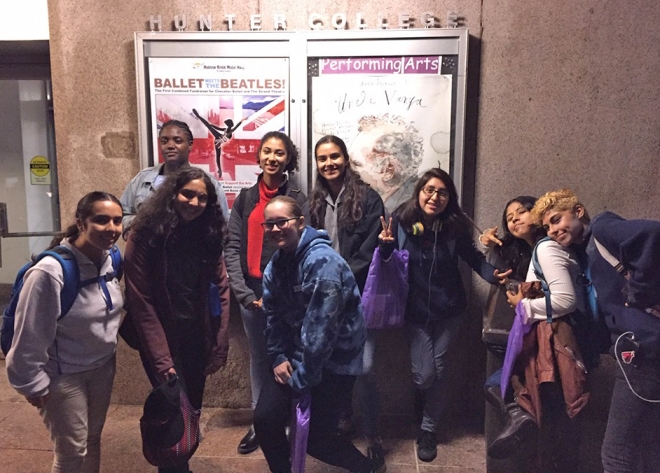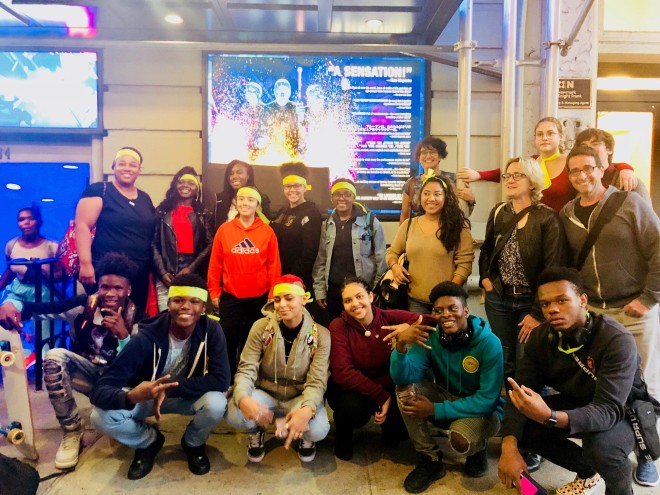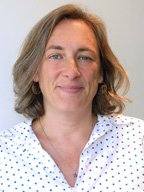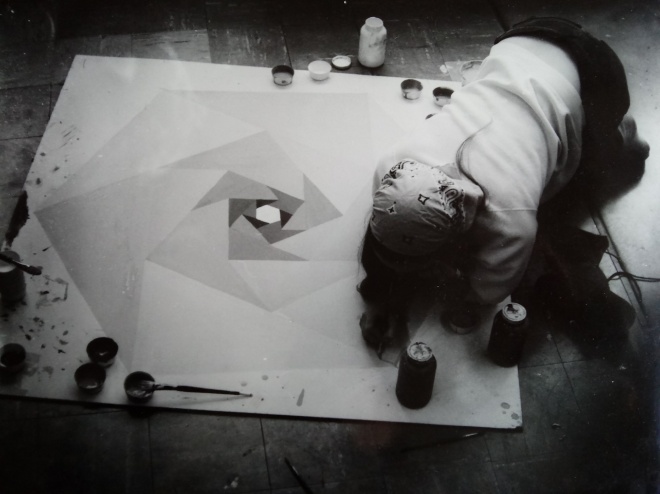CUNY Service Corp student Michelle Tibois and Sound Thinking NYC Project Director Ah-Keisha McCants sat down via phone-chat to speak with ‘sound thinker’ Sharon A. about her thoughts on the Hunter College talk and tour experience. The special event took place on Monday, October 15th and was hosted by Hunter College’s Deputy Director of Undergraduate Admissions and Recruitment, Joseph Fantozzi Jr.
A number of our Sound Thinking cohort-members and CAT Youth Theatre members toured Hunter’s campus and experienced a curated information session on the nuts and bolts of applying to the prestigious yet affordable undergraduate program. The students learned about Hunter’s music and arts programs and more. Student Ambassadors and current college juniors, Becky and Brooke, shared the ins and outs of applying for scholarships, internships, and lunch plans. They shared advice on making friends on campus (hint, it’s really easy), the amazing music courses available (they’re super hands-on and include special music concerts) as well as the perks of Hunter’s state-of-the-art library (students not only can borrow books, but iPads and laptops!). All in all, it was a great night of higher learning!
Michelle, who is a current senior at John Jay College kicked off the conversation. Read the interview below:
Michelle: Hi Sharon. It’s nice to meet you over the phone. My name is Michelle Tibois, […] I am working alongside Ah-Keisha and Paola for Sound Thinking. I’m a CUNY Service Corps member. I just kind of want to interview you in regards to the Hunter College experience that you had, would you mind answering some questions for me, if you have time?
Sharon: Yeah, I have time.
M: Awesome! I wanna know about you Sharon. Tell me about you. Your grade, what you do?
S: Well, I’m Sharon. I’m 17, I’m a junior. I play instruments. I like soccer. There isn’t much to that after that.
M: What do you play? What instruments?
S: Guitar, piano, ukulele.
M: Oh my goodness, that’s amazing.
Ah-Keisha McCants: She plays all these instruments, wait say them again, Sharon!
S: Guitar, piano, ukulele and a little bit of the banjo.
M: Awesome, thank you. That’s great. What did you learn about Hunter College while you were there?
S: I learned that they were a liberal arts college and I didn’t know that it was a public college and that it was part of CUNY. I learned that they had programs for music and that the tuition was under 7 thousand dollars.
M: Where on the campus did you visit?
S: We visited all of the buildings, the north, west and east buildings. We were able to see the big auditorium that I think, seats about 2,000 people.
M: What did you think about the campus? what was your impression when you got there?
S: It’s big, I mean, it’s just 3 buildings but it’s big and each building has it’s own environment. I know that there’s like different types of people in each building and everyone’s there for something different.
M: Anything that you picked up on or saw on the campus, like the life of the students or even anything that was visually appealing or the setting around you?
S: All the buildings are connected by bridges so you can just go to one building by like crossing the bridges instead of going outside in the street and crossing the street to get to the other side.
M: I like that about their school, so what are your thoughts on their music program? Especially for someone as talented as you are! What do you think?
S: I think they have music education and they have classes for history of music, like rock n roll and things like that…
M: Did you learn anything about the college admissions process that surprised you?
S: Not really.
M: So you kind of knew what the process was like?
S: Yes, in my school we talk about it so much. We’ve been talking about it since middle school.
M: What are your thoughts about going to school in NY?
S: Well, I want to.
M: What is it about NYC? Is it the environment? Are the schools good, to you?
S: Yes and I love the city and I want to study in the city. But I feel like if I was able to get an opportunity to study outside of NY, I think I would take it.
M: What did you think about the student Ambassadors, Becky and Brooke?
S: I think they were nice, I can relate to them. They talked about things I think would be important to teenagers, like me. Maybe if the ambassadors were older they wouldn’t understand what I would be asking. Like when it comes to like a food plan or jibs or internships nearby.
M: What other programs did you learn about?
S: I know they have programs for Pre-Med and Pre-Law as well.
M: What do you think you want to major in while in college?
S: I know it’s gonna be in Music Technology, most likely sound engineering or audio engineering. But it would definitely be music related. Just not music education.
M: Why were you interested in visiting Hunter?
S: I’ve been to one other college in the city, visiting, but I wanted to see my options. I knew that if I looked online I would be able to find information but I wanted to actually see the school and see how the student life is.
M: Are there any other colleges or universities you’d like to visit? Has there been any on your mind?
S: NYU. I have to do more research.
AM- I have one … question, what advice would you give to other young people who are considering whether they should go to college or not?
S: I think college is always a good option, it’s not for everybody but you should always have some kind of education in college because it can always back you up no matter what you do. At least in any job that you choose it may be easier for you to find something than just having a high-school diploma. College education is important and it will actually take you places.
AM: Any other schools in NY you’d like to visit?
S: Maybe Julliard, but I don’t know about that one.
AM: Michelle, did you ever have a situation where you had to realize, let me just take a chance?
M: Oh yeah. 100 percent. When I first I got into to John Jay I wasn’t sure how I was going to pay for school because even though I had my parent’s financial support, they weren’t able to support me fully, with all my tuition. I remember senior year of high school, a company had offered this opportunity for us to create a creative portfolio and also a creative writing piece. I remember having all these creative people around me and I was feeling very discouraged but when I applied I got support from my teachers. They reminded me of the worst that could happen, but at least I would put my best foot forward and I got both scholarships. I got through two years of college without having to need support from my parents. Then the next two years, it worked out and because I took that chance and I didn’t let that discouragement be my reality, it actually propelled me forward. It’s all about putting your foot in the door and taking that step because you never know what’s behind it..
AM: That’s what Sound Thinking is all about, promoting positive risk-taking. Well, thank you so much Sharon.
M: Thank you!
S: Thank you for calling.
Thank you to Joseph Fantozzi and Hunter College student ambassadors, Becky and Brooke, for making our visit to Hunter a memorable one! We cannot wait for our next tour and talk!








